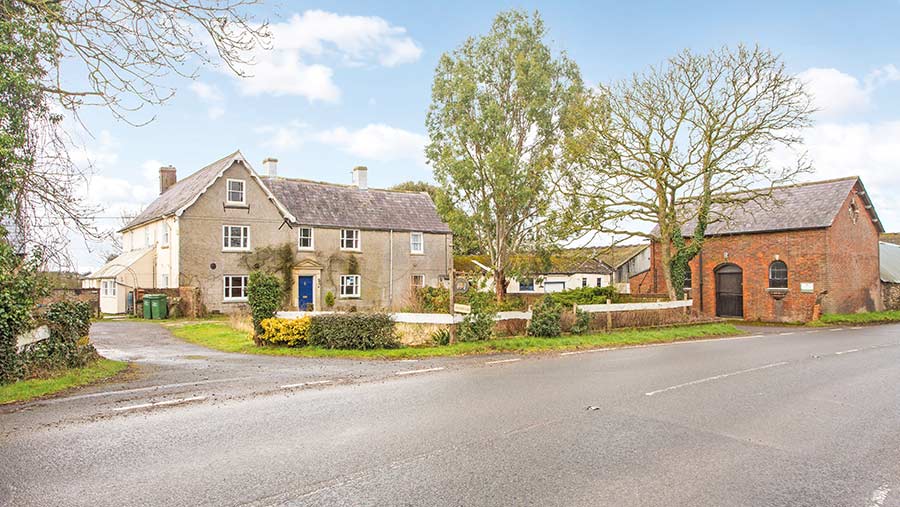Land in your area 2021: South-west England
Land prices in the South West have remained relatively stable year on year, with less growth than many other regions around the UK.
The average price paid for arable land in 2021 averaged £9,800/acre, a decline of 2% on the previous year, according to Strutt & Parker.
The highest price paid for arable land dropped by 38% in 2021, following particularly high prices in 2020 when they reached £17,000/acre.
Agents have reported that there is interest for land from a range of buyers, including farmers looking to expand, environmental buyers and investors.
The amount of land advertised for sale on the open market remains tight – an increase in private sales to cash buyers could be a significant factor in this reduction.
See also: Find out average farmland prices where you live
Environmental buyer interest
We continued to see demand outweigh supply in 2021.
Quality productive commercial farms, as well as lifestyle farms, continued to be in high demand, with many frustrated buyers and underbidders still looking for farms with cash burning holes in their pockets.
Demand is coming not only from local farmers looking to increase their own holdings for expansion purposes – either to accommodate the next generation or looking to use rollover money – but also from investors and lifestyle buyers looking to move out of urban conurbations, having reviewed their aims and aspirations, triggered by the pandemic.
The market has also seen the emergence of a new type of buyer. There is a growing demand, backed by substantial funds, for land for rewilding, planting trees to offset carbon, and creating biodiversity net gain.
A change in property development and house building has forced a number of developers to become buyers of land in order to offset nitrogen or phosphate pollution.
The volume of potential buyers will only maintain and strengthen the future value of agricultural land. The advent of these new types of buyer will support the value of the poorer land and possibly narrow the gap between it and the better ground.
Sophie Clotworthy, associate farm and rural agent, Woolley & Wallis
Fast-moving marketplace
At the start of 2021 we were unsure what type of market we would find for farms and land.
Would further lockdowns slow the market? Would the market cool when the stamp duty window partially closed at the end of June? Would anyone actually wish to sell?
However, what we actually saw was one of the fastest-moving markets we have seen for some time.
Why has the market moved so quickly? An increase in demand for farms due to positive farm commodity prices, low borrowing rates, a strong residential market and an increase in farmers looking to reinvest or expand.
An increase in the number of buyers wishing to purchase land for environmental reasons to undertake conservation and greening activities.
The lack of supply has maintained values and benefited those vendors choosing to go to the market.
Buyers from all over the UK and abroad are drawn to the West Country, which benefits from coast and moorland, while retaining good road and rail links.
George Alder, partner, Stags
What sold well?

© Stags
Stags sold Wolversleigh Farm, Sidbury, Devon for £1.55m. The 104-acre grassland farm sold via online auction for £350,000 above the guide price to new entrants, after receiving a lot of market interest.
The property has a four-bedroom house with a range of modern and traditional outbuildings and a mixture of grassland and woodland.
Under offer

© Woolley & Wallis
Wootton Fields Farm, Royal Wootton Bassett, Wiltshire was guided at £1.5m and is under offer to a lifestyle buyer, after a flurry of interest over Christmas and the New Year.
The property was launched by Woolley & Wallis and includes a six-bedroom house, commercial units, farm buildings and 30 acres of ring-fenced grassland and woodland.
